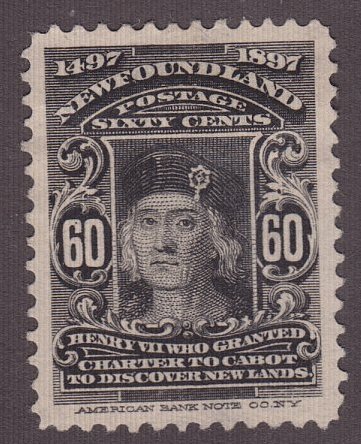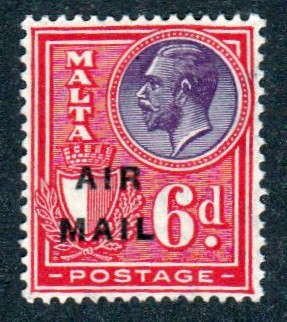
Discussion - Member to Member Sales - Research Center

Discussion - Member to Member Sales - Research Center

Ideas?
Chris

Login to Like
this post
No idea how well this will work on older stamps, but I think what you describe is what I have experienced with modern postally used clippings from Romania and Bhutan. I had an easier time when I used really hot water, but I still had to slowing and carefully rub some of the paper off with my fingers, ruined a few and others I could not get all completely off. For hot water, I ran my tap until it gets as hot as possible, uncomfortable to get on your skin, pour onto the stamps then let sit for a few minutes until I can stick my hands in the water okay, then get to work before the water cools off too much. I also use a 1 inch paint brush to help get the gum off.
Josh

Login to Like
this post
Many of the early stamps from old collections were glued onto the pages in the albums with a dark horse hide glue. As of yet I have not found a method of removing the glue or album page paper from the stamp without destroying the stamp itself.

Login to Like
this post
I've been dealing with this issue recently, sorting a messy accumulation of Danish stamps from the beginning to the 1880's.
So far, the most efficient way to deal with the paper has been to first soak the stamps in warm water for... maybe an hour or so. After that, some will let go of the paper. All, however, will be soaked "through."
The "point" is to get the old horse hide/fish bone glue to become soft, even if it doesn't let go.
Then I take a small saucepan and put about 1" (2.5cm) of water in it; bring it to a boil on the stove.
Now, please be CAREFUL with this next step! Don't burn yourself on the steam!
I take one stamp at a time-- with tongs-- from the bowl, and dunk it into the boiling water for 30-60 seconds. Typically, that dissolves the horse hide glue... it was generally boiled, to begin with, so we're basically reversing the original process. "Re-capture" the stamp from the boiling water with tongs, and immediately start to remove the paper... I find laying the stamp face down directly on the kitchen counter not only "flash cools" it, it also gives me a flat firm working surface. Typically, you'll be able to insert the tip of the tongs at one corner, and gently "shave" the old paper off. You may have to repeat a couple of time for stubborn paper, because the glue sets back up very quickly. But it does work... on about 99% of old stamps.
A couple of days ago I "rescued" a hopelessly gone Danish imperf with a rare cancel to where it now has a pristine back. Selling on eBay, the difference between "dubious condition" for $10 and "very fine" for $50.
You might practice on a couple of damaged cheapies, if you have them handy.
Be very careful that you don't "dig" into the stamp paper with the tip of your tongs, and cause a thin. Be EXTRA careful when working with stamps printed on "soft" or "porous" paper.
Also, DO NOT DO THIS with any stamps printed with fugitive or aniline inks... the stamps will bleed and fade! That means much early GB is OUT of the question.
The above courtesy of my dad who was a stamp collector, but mostly restored fine antiques, paintings and books.
Cheers,
Peter

Login to Like
this post

I have not yet found a way of removing heavy paper from the back of stamps issued in the 1800s and early 1900s. I think they used cement instead of glue but soaking, using a little soap or even detergent in the water doesn't even touch it.
Ideas?
Chris

Login to Like
this post

re: Removing paper from older stamps
No idea how well this will work on older stamps, but I think what you describe is what I have experienced with modern postally used clippings from Romania and Bhutan. I had an easier time when I used really hot water, but I still had to slowing and carefully rub some of the paper off with my fingers, ruined a few and others I could not get all completely off. For hot water, I ran my tap until it gets as hot as possible, uncomfortable to get on your skin, pour onto the stamps then let sit for a few minutes until I can stick my hands in the water okay, then get to work before the water cools off too much. I also use a 1 inch paint brush to help get the gum off.
Josh

Login to Like
this post
05:24:00pm
re: Removing paper from older stamps
Many of the early stamps from old collections were glued onto the pages in the albums with a dark horse hide glue. As of yet I have not found a method of removing the glue or album page paper from the stamp without destroying the stamp itself.

Login to Like
this post

re: Removing paper from older stamps
I've been dealing with this issue recently, sorting a messy accumulation of Danish stamps from the beginning to the 1880's.
So far, the most efficient way to deal with the paper has been to first soak the stamps in warm water for... maybe an hour or so. After that, some will let go of the paper. All, however, will be soaked "through."
The "point" is to get the old horse hide/fish bone glue to become soft, even if it doesn't let go.
Then I take a small saucepan and put about 1" (2.5cm) of water in it; bring it to a boil on the stove.
Now, please be CAREFUL with this next step! Don't burn yourself on the steam!
I take one stamp at a time-- with tongs-- from the bowl, and dunk it into the boiling water for 30-60 seconds. Typically, that dissolves the horse hide glue... it was generally boiled, to begin with, so we're basically reversing the original process. "Re-capture" the stamp from the boiling water with tongs, and immediately start to remove the paper... I find laying the stamp face down directly on the kitchen counter not only "flash cools" it, it also gives me a flat firm working surface. Typically, you'll be able to insert the tip of the tongs at one corner, and gently "shave" the old paper off. You may have to repeat a couple of time for stubborn paper, because the glue sets back up very quickly. But it does work... on about 99% of old stamps.
A couple of days ago I "rescued" a hopelessly gone Danish imperf with a rare cancel to where it now has a pristine back. Selling on eBay, the difference between "dubious condition" for $10 and "very fine" for $50.
You might practice on a couple of damaged cheapies, if you have them handy.
Be very careful that you don't "dig" into the stamp paper with the tip of your tongs, and cause a thin. Be EXTRA careful when working with stamps printed on "soft" or "porous" paper.
Also, DO NOT DO THIS with any stamps printed with fugitive or aniline inks... the stamps will bleed and fade! That means much early GB is OUT of the question.
The above courtesy of my dad who was a stamp collector, but mostly restored fine antiques, paintings and books.
Cheers,
Peter

Login to Like
this post

